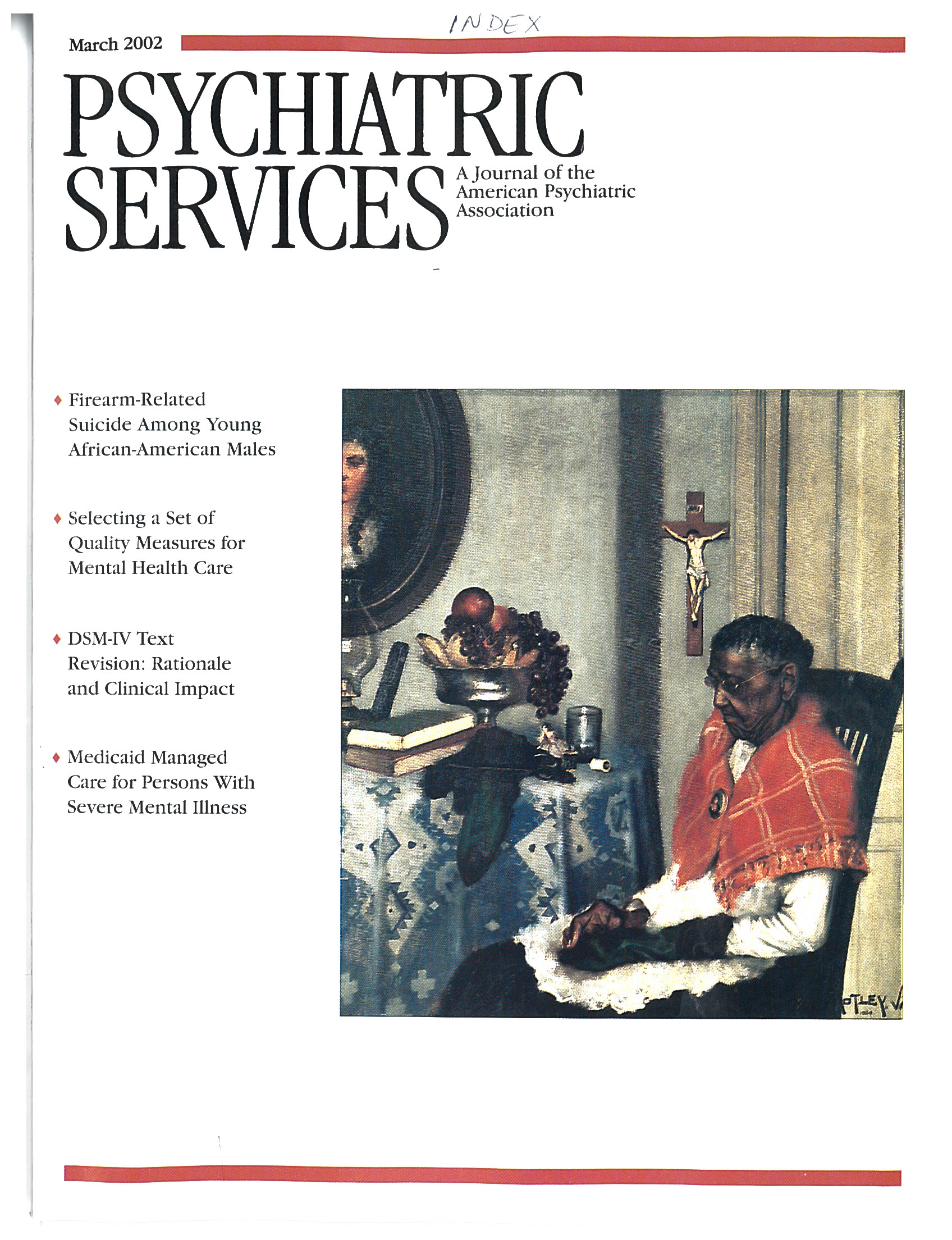This Month's Highlights
Selecting Core Quality Measures for Behavioral Health Care
Routine monitoring of the quality of care has become an important focus throughout the mental health system. Providers of care, payers, managed care organizations, regulators, and accrediting bodies have each implemented their own measures and specifications. The resulting heterogeneity among measures has increased the burden on providers, limited the comparability of findings, and hindered efforts to focus limited resources on development of the most promising measures. In this issue, Richard C. Hermann, M.D., M.S., and R. Heather Palmer, M.B.,B.Ch., S.M., acknowledge that selecting a core set of measures is "an ambitious undertaking." They describe the desirable attributes of such measures and the ways in which stakeholders' different perspectives and priorities have prevented them from reaching a consensus. The authors present a framework that stakeholders can use to understand and integrate the underlying dimensions and tensions of the selection process and take steps toward consensus (see page 281).
Medicaid Managed Care and Severe Mental Illness
Virtually every state in the United States has some type of managed care program to control costs for Medicaid recipients. Some programs use capitation to transfer financial risk to for-profit entities, and others provide services on a no-risk fee-for-service basis. Two papers in this issue examine how clients with serious mental illness fare under the financial risk arrangements used by Medicaid programs. In a study of more than 200 clients, Joseph P. Morrissey, Ph.D., and his coauthors found that clients who were enrolled in a full-risk program used significantly fewer mental health services than those in a no-risk program and had poorer mental and physical health outcomes. The authors discuss the ways in which full-risk capitation arrangements can have adverse consequences for this patient population (see page 293). Roger A. Boothroyd, Ph.D., and his colleagues, who surveyed nearly 5,000 Medicaid enrollees on their use of and satisfaction with medical and mental health services, also found that enrollees in full-risk programs had poorer access to services. Satisfaction with services differed by risk arrangement (see page 299). In a related Taking Issue, Steven S. Sharfstein, M.D., highlights the important findings of these two studies and their implications for clinicians (see page 235).
The DSM-IV Text Revision: Rationale and Potential Impact
In July 2000 the American Psychiatric Association published the DSM-IV Text Revision. In this issue, Michael B. First, M.D., and Harold Alan Pincus, M.D., cochairs of the work groups that developed the Text Revision, point out that because the current plan is for DSM-V to be published no earlier than 2010, a major concern is that the text of DSM-IV will become increasingly out of step with the psychiatric database. The authors explain the objectives of the DSM-IV Text Revision: to make changes to incorporate new research findings since 1992; to correct errors and ambiguities that have been identified in DSM-IV; and to update diagnostic codes to reflect changes in the ICD-9-CM coding system. They also describe specific text changes that are likely to have an impact on the daily practice of DSM-IV users (see page 288).
Effectiveness of Client-Run Self-Help Groups
Two articles in this month's issue examine the effectiveness of self-help groups for people with serious mental illness by documenting the experiences of clients who lead and participate in them. Steven P. Segal, Ph.D., and Carol Silverman, Ph.D., report the results of a study that assessed three outcomes among 255 long-term users of self-help agencies who were interviewed at baseline and six months later. Overall, the clients' independent social functioning remained the same, and they needed significantly more assistance in their social functioning at six months. However, the clients' sense of personal empowerment improved significantly (see page 304). In the second article, Stephen Magura, Ph.D., C.S.W., and associates report one-year outcomes for 240 attendees of 12-step, dual-focus self-help groups for people who have a serious mental illness and a substance use disorder. They found that consistent group attendance was associated with better adherence to medication regimens, less severe symptoms, and avoidance of hospitalization (see page 310).
Briefly Noted…
• A study of trends in firearm-related suicides between 1979 and 1997 notes a disturbing increase in the incidence of such deaths among African-American males between the ages of 15 and 24 (see page 332).
• Two papers examine three approaches to measuring the functioning of persons with severe mental illness—one for consumers, one for psychiatrists, and one for social workers (see pages 326 and 340).



